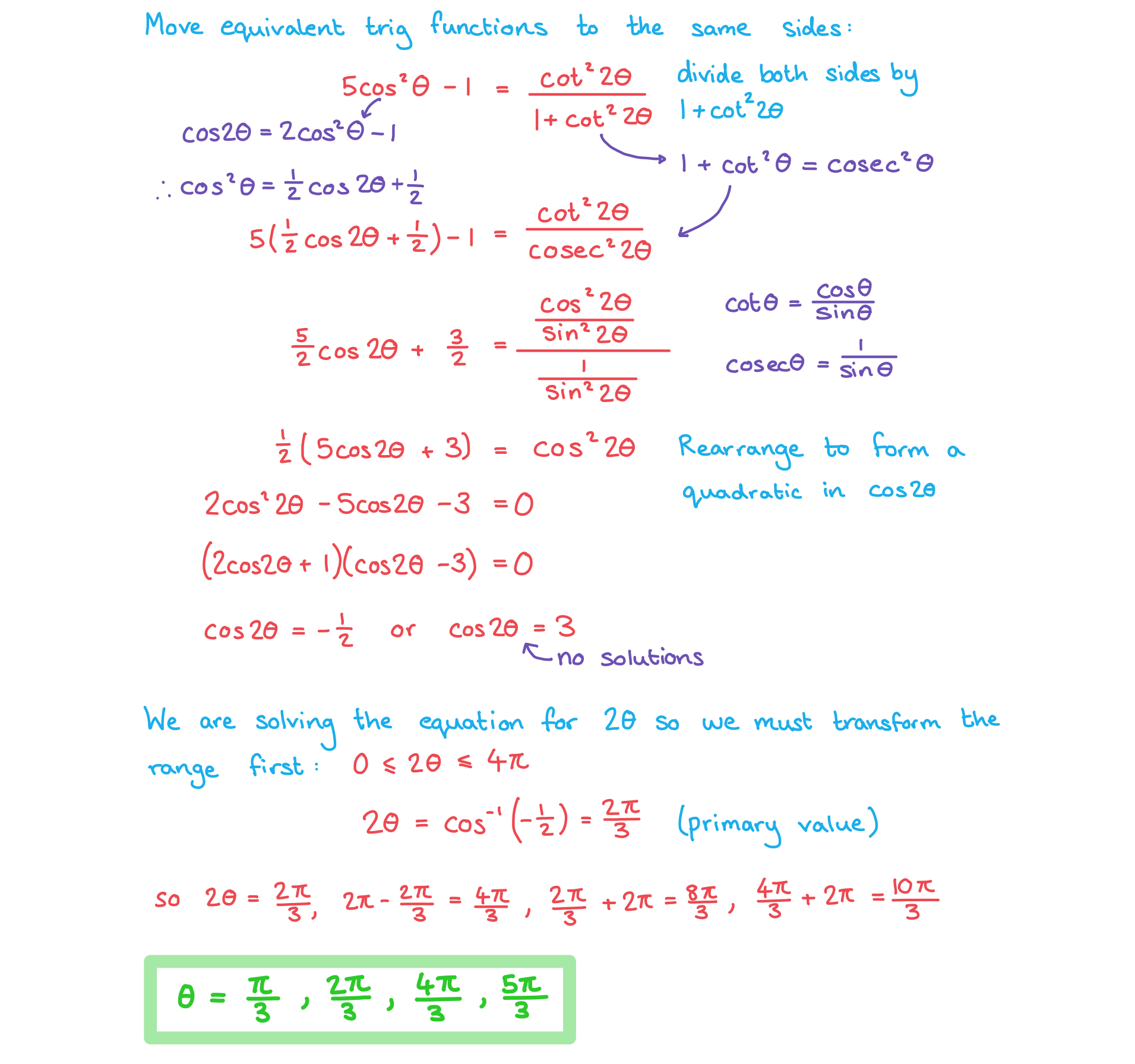Strategy for Trigonometric Equations
How do I approach solving trig equations?
- You can solve trig equations in a variety of different ways
- Sketching a graph
- If you have your GDC it is always worth sketching the graph and using this to analyse its features
- Using trigonometric identities, Pythagorean identities, the compound or double angle identities
- Almost all of these are in the formula booklet, make sure you have it open at the right page
- Using the unit circle
- Factorising quadratic trig equations
- Look out for quadratics such as 5tan2x – 3tan x – 4 = 0
- The final rearranged equation you solve will involve sin, cos or tan
- Don’t try to solve an equation with cosec, sec, or cot directly
What should I look for when solving trig equations?
- Check the value of x or θ
- If it is just x or θ you can begin solving
- If there are different multiples of x or θ you will need to use the double angle formulae to get everything in terms of the same multiple of x or θ
- If it is a function of x or θ, e.g. 2x – 15, you will need to transform the range first
- You must remember to transform your solutions back again at the end
- Does it involve more than one trigonometric function?
- If it does, try to rearrange everything to bring it to one side, you may need to factorise
- If not, can you use an identity to reduce the number of different trigonometric functions?
- You should be able to use identities to reduce everything to just one simple trig function (either sin, cos or tan)
- Is it linear or quadratic?
- If it is linear you should be able to rearrange and solve it
- If it is quadratic you may need to factorise first
- You will most likely get two solutions, consider whether they both exist
- Remember solutions to sin x = k and cos x = k only exist for -1 ≤ k ≤ 1 whereas solutions to tan x = k exist for all values of k
- Are my solutions within the given range and do I need to find more solutions?
- Be extra careful if your solutions are negative but the given range is positive only
- Use a sketch of the graph or the unit circle to find the other solutions within the range
- If you have a function of x or θ make sure you are finding the solutions within the transformed range
- Don’t forget to transform the solutions back so that they are in the required range at the end

Exam Tip
- Try to use identities and formulas to reduce the equation into its simplest terms.
- Don’t forget to check the function range and ensure you have included all possible solutions.
- If the question involves a function of x or θ ensure you transform the range first (and ensure you transform your solutions back again at the end!).
Worked Example
Find the solutions of the equation in the interval
.

